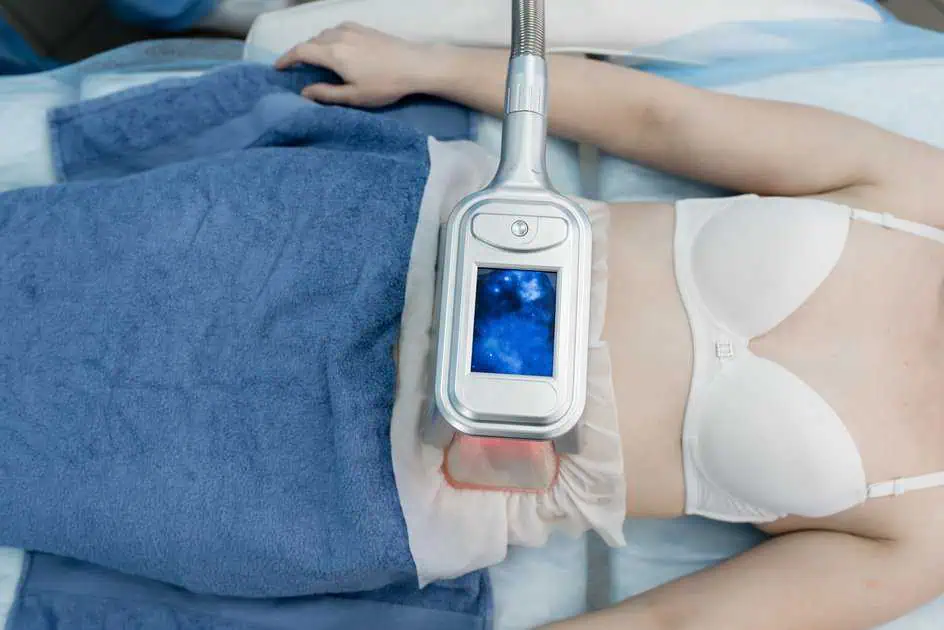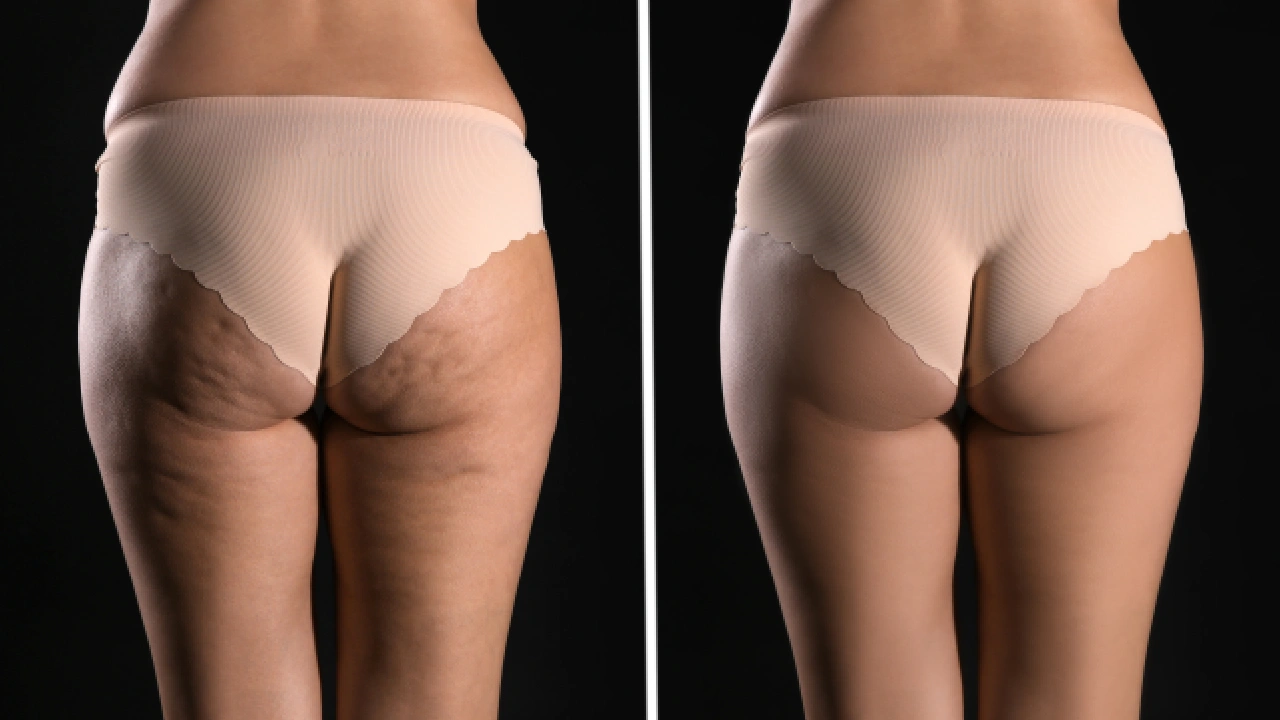Men with enlarged breasts are often reluctant to go the gym, beach or other public places where their chest might be seen. In fact many men wear undergarments to smooth out and conceal enlarged breasts. These undergarments range from binders and bras to a combination of the two. Men are often inhibited by what they think are unsightly breasts and exercise or weight loss may not be effective in resolving the enlarged tissue.
At MilfordMD Dr. Richard Buckley uses a combination of powered microcannular liposuction and laser lipo sculpture to reduce enlarged male breasts. The procedure is very effective and is done with the patient awake and using tumescent local anesthesia. No stitches or cutting is required. Infrequently there may be some tough glandular tissue directly beneath the nipple which is then removed via a small incision at the base of the nipple.
If only fatty tissue is present in the enlarged breasts then liposuction and laser liposculpture alone can give an excellent result. If significant glandular tissue is present then I remove the excess tissue by performing gynecomastia surgery. (pdf from Connections Magazine – 2012)
The development of gynecomastia, enlarged breasts like a woman, may depend on several factors, or merely genetics.
Having larger male breasts is often related to a hormonal imbalance, which can result from medications or lifestyle. Examples of commonly prescribed medications that may cause gynecomastia include:
- cimetidine (used for heartburn and ulcers)
- digitalis (used for heart failure)
- diazepam (Valium) (used for anxiety)
- atorvastatin (Lipitor, cholesterol-lowering)
Other gynecomastia causing culprits:
- Frequent use of bodybuilding steroids
- marijuana or alcohol
- weight loss (can leave men leaner everywhere but the breasts)
- malnutrition
- cirrhosis of the liver
- overactive thyroid
- breast or testicular cancer.
Understanding the cause is an important first step in treating the condition. It is important to rule out the more dangerous underlying conditions, including male breast cancer, before addressing the cosmetic concern.
Unfortunately, merely correcting the causative problem doesn’t usually undo the cosmetic problem of women-like breasts. Abundant breast tissue may linger even after a man stops using body-enhancing steroids.
Treating Gynecomastia
There are two things I look for when treating gynecomastia: How much of the visible breast enlargement is due to fat and how much is due to underlying glandular tissue. In most men, we have to take out not only the excess fat but also the enlarged breast glands. These sit beneath the nipple and areola. Fatty tissue is liposculpted away. If glandular tissue is enlarged, I then make a small incision just under each of the nipples, in the pigmented areola. The gland easily slides out through the incision. I close the incision with only or mostly sutures under the skin.
The entire procedure is done with only a local anesthetic with my patients are awake and comfortable. Patients go home after the surgery and I recommend rest for a day or two (depending on how much tissue I remove). Men usually wear an elastic chest binder 24 hours a day the week following the procedure and part-time the week after that. Otherwise, most report little if any pain and minor discomfort.
This is one of the most gratifying procedures I do. Men, who are on a private emotional rollercoaster because they have enlarged breasts, emerge from the procedure as if we literally took a weight off their chest. In my experience, men who have the procedure have had little downtime and were very happy with the results.
Male Breast Reduction
The VERY Fixable Problem Most Men Don’t Want to Discuss
By Richard Buckley, M.D. – Connections Magazine: September 2012
“Men don’t think of themselves as having breasts, but all men do. For many men, unnaturally enlarged breasts keep them from truly enjoying life. They tell me they don’t go to the gym; they don’t go to the beach. Men are inhibited by what they think are unsightly breasts, and no amount of exercise or weight loss seems to make them go away.”
The great news is we can successfully address excessive male breasts (called gynecomastia) with surgery. In my experience, men who have the procedure have little downtime and over-the-top satisfaction.
First, why do some men have the problem?
Whether a man’s breasts are flat to the chest or enlarged like women’s breasts can depend on several factors, or simply, genetics.
Some men are born with the tendency for larger breasts; others acquire the trait.
Having larger male breasts often has to do with a
hormonal imbalance, which can result from medications or lifestyle. For example, commonly prescribed medications, such as cimetidine for heartburn and ulcers, digitalis for heart failure, diazepam (Valium), and the cholesterol-lowering atorvastatin, known as Lipitor, can cause gynecomastia.
Other gynecomastia Culprits:
Frequent use of bodybuilding steroids, marijuana or alcohol. Weight loss can leave men leaner everywhere but the breasts. The condition can also result from more serious health issues, such as malnutrition, cirrhosis of the liver, overactive thyroid, breast or testicular cancer.
Understanding the cause is an important step in treating the condition. We have to rule out the more dangerous underlying conditions, including male breast cancer, before addressing the cosmetic concern.
Unfortunately, correcting the underlying problem doesn’t usually undo the cosmetic problem of women-like breasts. Abundant breast tissue lingers even after a man stops using body-enhancing steroids, for example.
Solving Gynecomastia
There are two things we look for when treating gynecomastia: How much of the visible breast enlargement is due to fat and how much to underlying glandular tissue. In most men, we have to take out not only the excess fat but also the enlarged breast glands. These sit below the nipple and areola.
So, we address the fatty tissue by liposculpting it away. Then, we make a small, arced incision just under each of the nipples, in the pigmented areola. We enter the breast through that incision and pull out the gland. The gland easily slides through the incision, which is masked by the pigmented area and hidden nicely after surgery.
The entire procedure is done with only a local anesthetic. Patients are awake and comfortable during the operation. They go home the same day and rest for a day or two (depending on how much tissue we remove). Men usually wear an elastic chest binder 24 hours a day the week following the procedure and part-time the week after that. Otherwise, most report little if any pain and minor discomfort.
This is one of the most gratifying procedures I do. Men, who are on a private emotional roller coaster because they have enlarged breasts, emerge from the procedure as if we literally took a weight off their chest.







